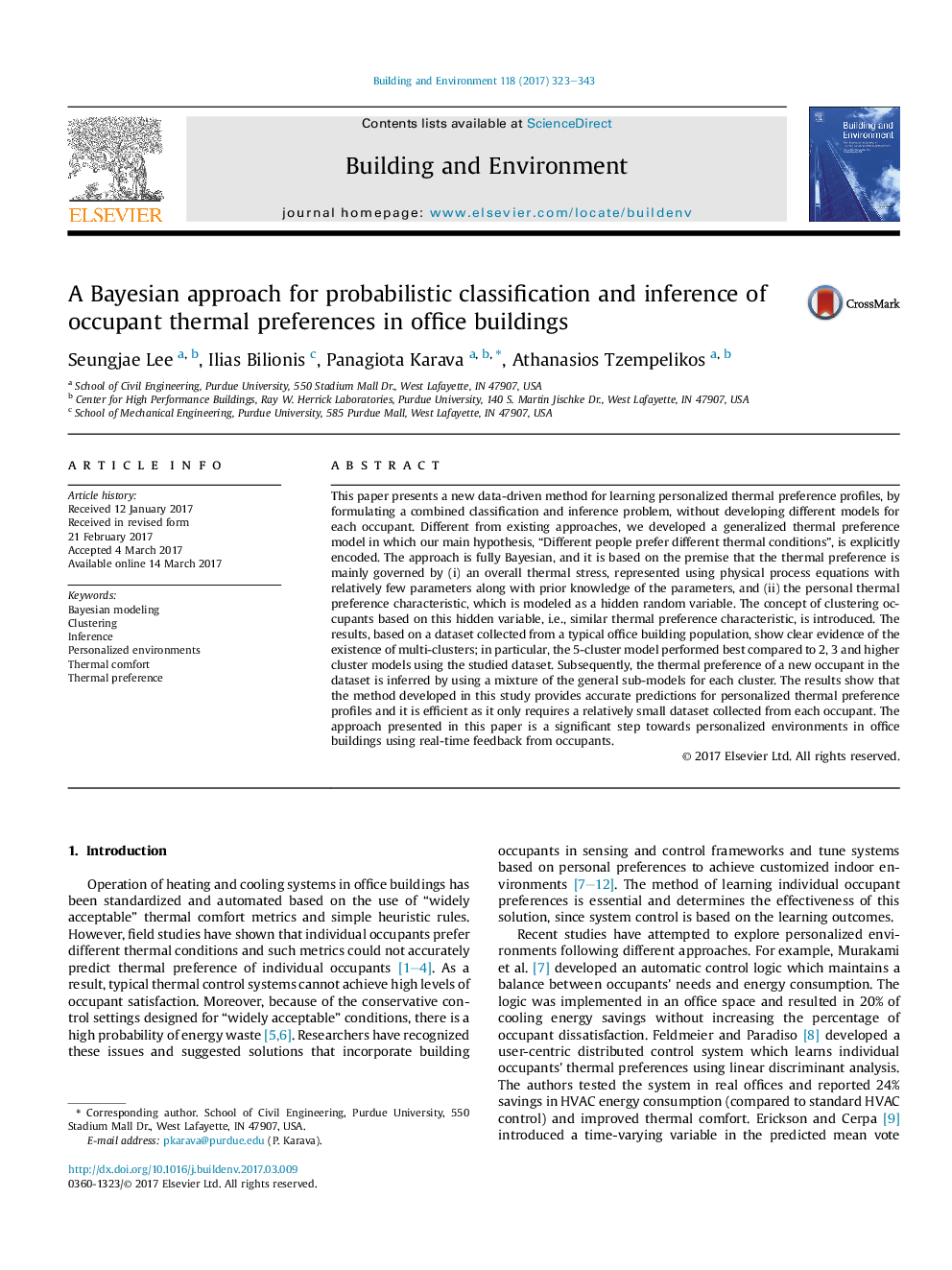| Article ID | Journal | Published Year | Pages | File Type |
|---|---|---|---|---|
| 6479288 | Building and Environment | 2017 | 21 Pages |
•Introduced a new data-driven method for learning personalized thermal preferences.•Formulated a combined classification and inference problem.•Developed a Bayesian approach to incorporate prior knowledge and hidden variables.•Determined the optimal number of clusters in a dataset.•Inferred personalized profiles using a mixture of sub-models.
This paper presents a new data-driven method for learning personalized thermal preference profiles, by formulating a combined classification and inference problem, without developing different models for each occupant. Different from existing approaches, we developed a generalized thermal preference model in which our main hypothesis, “Different people prefer different thermal conditions”, is explicitly encoded. The approach is fully Bayesian, and it is based on the premise that the thermal preference is mainly governed by (i) an overall thermal stress, represented using physical process equations with relatively few parameters along with prior knowledge of the parameters, and (ii) the personal thermal preference characteristic, which is modeled as a hidden random variable. The concept of clustering occupants based on this hidden variable, i.e., similar thermal preference characteristic, is introduced. The results, based on a dataset collected from a typical office building population, show clear evidence of the existence of multi-clusters; in particular, the 5-cluster model performed best compared to 2, 3 and higher cluster models using the studied dataset. Subsequently, the thermal preference of a new occupant in the dataset is inferred by using a mixture of the general sub-models for each cluster. The results show that the method developed in this study provides accurate predictions for personalized thermal preference profiles and it is efficient as it only requires a relatively small dataset collected from each occupant. The approach presented in this paper is a significant step towards personalized environments in office buildings using real-time feedback from occupants.
Graphical abstractFigure optionsDownload full-size imageDownload high-quality image (265 K)Download as PowerPoint slide
